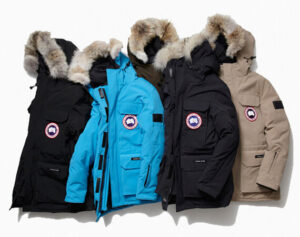by Kerry Torpey on January 25, 2018
Arts & Entertainment

by Patrick Fuller ’21
A&E Staff
Remember that short stint of time when everyone seemed to be an animal rights activist battling against the fur industry? According to National Geographic, 15 or 20 years ago top models would pose for ads with slogans like, “We’d rather go naked than wear fur.’” However, fur production has more than doubled since the 1990s, with about a hundred million skins created in 2015. What used to be a target of shame and disdain has now become the premier option for modern winter clothing.
Look no further than Macy’s, for example. A visit to the store’s online catalog will reveal “The Fur Vault,” currently filled with 173 items to choose from including a $2,795 printed fox fur coat of dazzling, white splotched with patterns of blue and red. Furthermore, Macy’s offers a chinchilla-trim mink fur belted cape for $6,995 and a Persian lamb fur coat for $8,895. Beyond the capes and coats lies an assortment of accessories ranging from backpacks, gloves, hats, headbands, and scarves to tech accessories and cases.
Even famous designers are taking advantage of the fur craze; Gucci sells a $34,000 printed mink fur coat with “slightly cropped sleeves for elegant appeal,” and “a breathtaking tiger design… printed to the back for a look that ensures you’re spotted and never forgotten.” Fur products seem to grant the wearer an aura of class and nobility while providing the comfort of a bathrobe.
However, the fur industry still remains controversial. According to People for the Ethical Treatment of Animals (PETA), “Animals on fur farms spend their entire lives confined to cramped, filthy wire cages. Fur farmers use the cheapest and cruelest killing methods available, including suffocation, electrocution, gas, and poison.” In fact, more than half the fur in the United States comes from cats and dogs skinned in China and mislabeled for deceptive advertisement.
Moreover, animals caught in the wild are subject to blood loss, shock, dehydration, frostbite, and gangrene as a result of a variety of crude traps. For example, the Canadian seal slaughter occurs annually in which tens of thousands of baby seals are shot for their pelts. Also, in Canada, hundreds of black bears are killed to create the famous hats worn by Queen Elizabeth II’s Five Regiments of Foot Guards.
A more relatable example of animal cruelty can be found in the surge of Canadian Goose jackets being purchased by college students everywhere. PETA details a step-by-step process of how “wild coyotes are caught in steel leg clamps, head-crushing traps, body-gripping traps, or neck snares.” Eventually, if the traps fail to kill the coyotes, “trappers will strangle, stomp on, or bludgeon them to death.” The fur taken from these skinned animals is sewn into the hoods of Canada Goose jackets. This dilemma leaves consumers wondering if a 2-inch goose patch on the left sleeve and a hood trimmed with coyote fur is truly worth $900 and the sacrifice of innocent animals.
However, Canada Goose has a “commitment to traceability” on its website which states, “We believe all animals are entitled to humane treatment in life and death, and are deeply committed to the responsible use and ethical sourcing of all animal materials in our products. We do not condone any willful mistreatment and neglect of animals or acts that maliciously cause undue pain, injury or suffering.” This program seeks to ensure that the company’s furs are sourced from a reliable provider which avoids “any unfair practices, willful mistreatment or undue harm.”
Finally, the business claims that it never purchases fur from fur farms, never uses fur from endangered animals, and only purchases fur from licensed North American trappers regulated by state, provincial, and federal standards.
Karl Lagerfeld, a Paris-based fashion designer and creative director of Chanel and Fendi, would most certainly defend Canada Goose in its production. In an interview with the fashion icon, The Independent learned that Lagerfeld reconciled his known love for animals by recognizing the fact that, “A butcher shop is worse” and predicting the terrible bout of unemployment the world would face without the fur industry.
No matter which side one may take, no one can deny the jacket’s heavy presence on the Providence College campus. A narrow survey of the population indicates that most people do not even know about the controversy behind the jackets. However, once informed, people are immediately appalled.
For example, Nicholas Lamberton ’21 said, “After hearing how the hoods are made, I can’t imagine anyone actually buying and supporting the Canada Goose brand.” Andy Carpio ’21 agreed, “It makes me sad that innocent animals have to be killed so someone can make a fashion statement.”
With the argument given from both sides, hopefully one can form his or her personal opinion on the morality of the fur industry and use it to influence the rest of the world, but until then fur in the fashion industry will continue to be a fashion statement for men and women’s clothing.
Comments are closed.
There is no excuse for wearing real fur these days. Even professional mountaineers know that synthetics insulate better. Coyotes and other animals can suffer for days before dying of exposure, blood loss, attacks by predators, gangrene, dehydration, etc. Anyone who wears real fur has these animals’ blood on their hands.
I will never wear fur. We have the choice between cruelty and compassion. What does it say about us if we knowingly choose cruelty? Humans can wear faux fur or other warm and stylish vegan options.